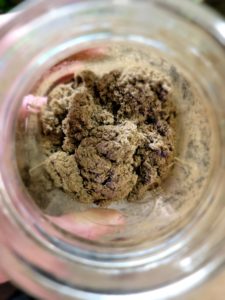Endometriosis is an often painful condition where the tissue that normally lines the uterus grows outside of the uterus. This endometrial lining can be found almost anywhere in the pelvic area and responds to hormones cyclically just like it would in the uterus. When the tissue is in the uterus, it is eliminated by the body during the menstrual cycle. For the endometrial tissue that is in other parts of the body, it breaks down but cannot be excreted from the body. This creates a cycle of chronic inflammation and the formation of scar tissue. These adhesions may block the fallopian tubes and contribute to fertility issues. Chronic inflammation produces an immune response causing a lack of response to progesterone during the luteal phase which can also affect fertility.
Symptoms of endometriosis may include:
- Painful periods
- Heavy or abnormal menstrual flow
- Painful urination/bowel movements during period
- Infertility
- Back pain during menstruation
- Pain during intercourse
- Diarrhea, constipation or other digestive issues
Six Ways to Reduce Endometriosis Pain and Inflammation
- Get acupuncture – Chinese medicine considers endometriosis a condition primarily of hormone imbalances and lack of blood flow (or blood stagnation). Acupuncture can help reduce inflammation, improve blood flow, and regulate hormones. Herbs and supplements help with hormone regulation at different times during the cycle. Because endometrial tissue responds to the same hormonal changes that trigger your period to start, it’s important that the treatment plan and herbs adapt with this cycle.
- Eat foods that increase blood flow and circulation – one to two days before the menstrual cycle starts (or whenever you start to feel pain or cramping), focus on moving blood and increasing blood flow. This will reduce cramping and pain and make the menses flow more smoothly without clots. If you are think you may be pregnant, avoid blood moving foods until you start your menses. Here are a list of foods to help increase circulation:
- shallots
- scallions
- chives
- leeks
- ginger
- cayenne
- spices like cumin, cardamom, dill, rosemary, oregano, nutmeg
- watercress
- horseradish
- sour cherries
- plums
- cauliflower
- broccoli
- brussel sprouts
- beet
- cabbage
- Warm the abdomen to increase blood flow and reduce cramps
- Frankincense and myrrh essential oils move stagnation. Place a few drops of each and mix into a carrier lotion or oil and rub the stomach in a clockwise motion, lifting up on the right side of the body and down on the left side of the body.
- A castor oil pack can also help soften adhesions and reduce pain from cramping. Roll the castor oil on your stomach and then place an old flannel pillowcase or t-shirt over your stomach that you are willing to stain. Apply a heating pad for 15 minutes.

- Moxibustion is also wonderful to increase circulation and blood flow. Moxibustion is a form of heat therapy in which dried mugwort (Artemesia argyi or A. vulgaris) is burned on or near acupuncture points. The warmth from the moxa warm and move Qi in the body. See a licensed acupuncturist to teach you how to use moxa at home!
- Arvigo Mayan Abdominal Massage – this is a specific manual therapy technique used to help align the organs of the pelvic cavity and reduce adhesions. It can help regulate cycles, reduce painful cramps, and improve fertility.
- Add supplements to your diet
- N-acetyl-cysteine (NAC) is an amino acid precursor to glutathione, an antioxidant. It reduces circulating testosterone and insulin, as well as cholesterol. It decreases abnormal cell growth and inflammation. Some multivitamins contain NAC or buy a specific supplement like Nutrient 950 with NAC by Pure Encapsulation. Take at least 600mg/day for at least 3 months.
- Fish oils – Omega-3 fatty acids are helpful in reducing overall inflammation in the body as well as pain reduction.
- Vitamin D – Vitamin D reduces inflammation in the body and is crucial for proper immune system functioning.
- Reduce/Eliminate Endocrine-Disrupting Chemicals (Xenoestrogens) – There are many chemicals in our environment today that affect our endocrine system. For women with endometriosis, xenoestrogens can be particularly problematic. These chemicals mimic estrogen in the body and can block the real estrogen from doing its work. Xenoestrogens are a prime cause of hormone imbalance. Dioxins are toxic chemicals created as by-products of many industrial processes. They have been linked to an increased risk of endometriosis and irregular menstrual cycles. They are found mainly in the fatty tissue of animals. Be sure to buy organic and low fat as much as possible and limit consumption of beef, dairy products, and eggs . Other chemicals that can disrupt the endocrine are:
- Nicotine
- BPA (in plastics)
- Phthalates (in plastics)
- Triclocarbans (in antimicrobial soap)
- Eat an anti-inflammatory diet – reducing the inflammation associated with endometriosis is crucial for reducing pain and other symptoms.
- Fish Oils
- Curcumin
- Bromelain
- Quercetin
- Increase fruits and vegetables and reduce red meats, dairy, gluten, and poultry
Be patient as you make some of these changes! It can take 3-6 months for noticeable shifts in hormones and your menstrual cycles. It can take up to a year for big improvements with endometriosis. Get the support you need to be persistent. It takes time but you can reduce the symptoms of endometriosis.


